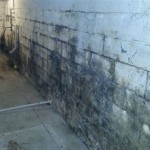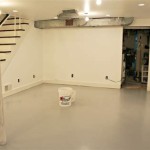Should I Be Concerned About Cracks in My Basement Floor?
Cracks in a basement floor are a common occurrence in homes of varying ages. While some cracks are merely cosmetic, others can indicate underlying structural issues requiring professional attention. Understanding the different types of cracks, their potential causes, and when to seek expert advice is crucial for homeowners.
Several factors contribute to basement floor cracking. The natural settling of a house over time can cause the foundation to shift slightly, leading to stress on the concrete floor and resulting in cracks. Changes in moisture levels in the soil surrounding the foundation can also contribute to movement and cracking. Expansive soils, such as clay, absorb water and expand, putting pressure on the foundation. Conversely, during dry periods, these soils contract, potentially leaving gaps and causing the foundation to settle unevenly.
Hydrostatic pressure, the force exerted by water against the foundation walls and floor, is another significant contributor to basement floor cracks. Excessive water accumulation around the foundation can create immense pressure, leading to cracks and other structural issues. Poor drainage around the foundation exacerbates this problem. Improperly installed or inadequate drainage systems can fail to divert water away from the foundation, increasing the risk of hydrostatic pressure damage.
The curing process of concrete itself can also lead to cracking. As concrete cures, it shrinks slightly. If the concrete is not properly cured, or if it dries too quickly, it can shrink unevenly, resulting in shrinkage cracks. These cracks are typically small and superficial and are less likely to indicate a serious structural issue. However, they can still be a pathway for moisture intrusion and should be sealed appropriately.
Different types of cracks suggest different levels of concern. Hairline cracks, thin and superficial, are often caused by concrete shrinkage and are generally not considered structurally significant. However, wider cracks, especially those that are horizontal, vertical, or stair-step shaped, warrant further investigation. Horizontal cracks can indicate significant hydrostatic pressure. Vertical cracks may suggest foundation settling or movement. Stair-step cracks, often found in concrete block foundations, can indicate shifting of the foundation wall.
Cracks that are actively widening or showing signs of movement are particularly concerning. Monitoring a crack's width over time can help determine if it is actively expanding. Placing tape across the crack and observing whether it breaks or stretches can indicate movement. Any signs of widening or shifting should be addressed by a qualified structural engineer.
The presence of water seepage through the cracks is another indicator of a potentially serious problem. Water intrusion can lead to mold growth, damage to stored belongings, and further deterioration of the foundation. Addressing the source of the water leakage and repairing the cracks are essential to prevent further damage.
Evaluating the severity of basement floor cracks often requires the expertise of a structural engineer. A professional can assess the type, size, and location of the cracks, investigate the underlying causes, and recommend appropriate repair solutions. They can also evaluate the overall structural integrity of the foundation and identify any other potential problems.
Several repair methods are available for addressing basement floor cracks. For minor cracks, epoxy injection can be an effective solution. Epoxy is injected into the crack, filling the void and creating a strong bond. For larger cracks or those exhibiting movement, more extensive repairs may be necessary. These can include underpinning, which involves strengthening the foundation by adding support piers beneath it, or crack stitching, which involves creating channels across the crack and filling them with epoxy or other reinforcing materials.
Preventing future cracking involves addressing the underlying causes. Improving drainage around the foundation is crucial for reducing hydrostatic pressure. This can involve installing or upgrading gutters and downspouts, ensuring proper grading to direct water away from the foundation, and installing a French drain system. Controlling moisture levels in the soil around the foundation can also help prevent cracking. This can be achieved through proper landscaping and irrigation practices.
Regular inspection of the basement floor is essential for early detection of cracks and other potential problems. Monitoring existing cracks for any changes in size or appearance can help homeowners address issues before they escalate. Addressing minor cracks promptly can prevent them from worsening and requiring more extensive repairs.
Maintaining proper drainage, controlling soil moisture, and addressing minor cracks promptly are essential steps in preventing future problems and ensuring the long-term stability of the foundation.

Causes Of Basement Floor Cracks And What To Do About Them News Events For Systems Inc

Cracks In Basement Floor Signs Of Foundation Problems

Is That Crack In The Basement Floor A Structural Problem Safe Harbor Inspections

What Causes Cracks In Basement Floors Everdry Toledo Ohio

Cracks In Basement Floor 6 Common Causes

Why Your Basement Floor Is Cracked Foundation Repair Company In Or And Wa Terrafirma

Understanding Floor Cracks In Pennsylvania Baker S Waterproofing

Are Cracks In New Build Concrete Floors Normal Inspections

Large Concrete Cracks In Basement Structural Engineering General Discussion Eng Tips

Are Cracks In My Basement Floor Normal The Real Seal Llc
See Also








